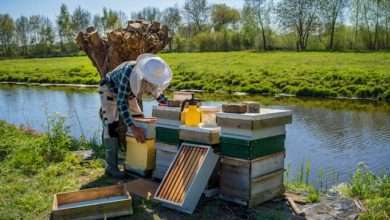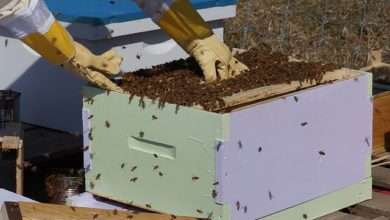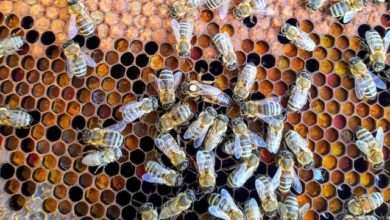How to Infuse Honey
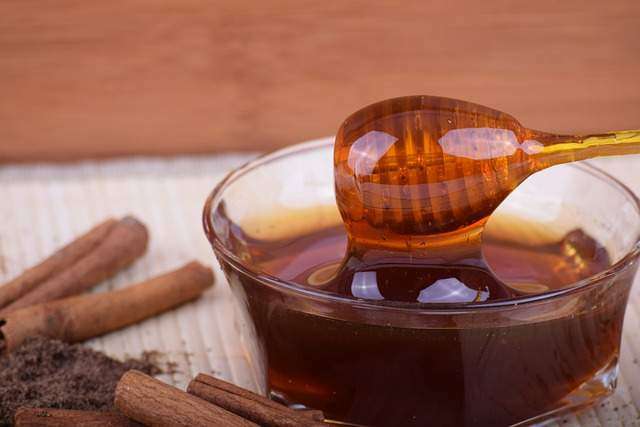
How to Infuse Honey
Many beekeepers have often struggled with the intrigues of the process of infusing honey. This question usually arises when beekeepers seek alternative ways of differentiating their honey from that of other sellers.
Subsequently, with a new premium product variety on your existing catalog, you can eventually boost your profit margin and increase your earnings.It is no doubt raw honey is delicious, nevertheless, infusing it usually entails adding amazing flavors which further improve the sweetness.
Therefore, whether pulled from your bee hives or purchased from beekeepers, infusing honey is usually quite a straightforward process entailing simple steps. These include:
- Acquiring natural raw honey
- Adding your chosen flavoring ingredients
- Filtering the mixture
- Bottling up the result, and your infused honey is ready for consumption.
Materials Required
Before starting any infusing, you will need to acquire and gather several items that would be utilized in the entirety of the process. These include:
- Honey
Of course, you will need the honey to be infused. These can often be acquired directly from your hives or purchased from trusted sources or beekeepers. Infusing often works best with light, mild-flavored honey to avoid conflicting flavor profiles in the final outcome.
- Flavorings
Most recommended and frequently used flavorings by the majority include dried herbs, spices, fruits, or even nuts among others.
Nevertheless, you should always be cautious and ensure that the products are fully dried since fresh or poorly dried varieties often lead to contamination or even the development of mold in your mixture.
- Containers
There are several container varieties in the market and as such, it is often important to carefully select containers most suitable for fulfilling individual requirements.
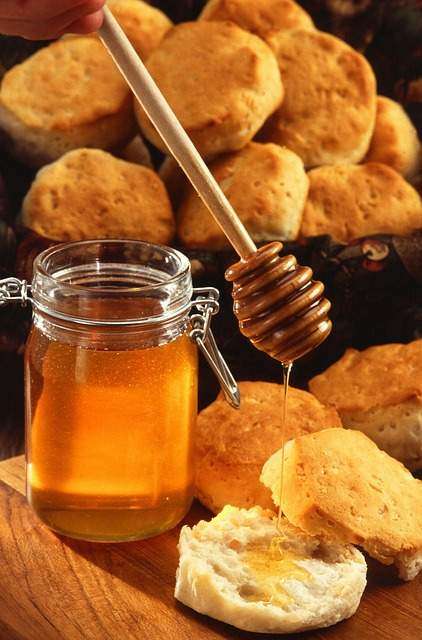
For instance, for honey infusion purposes, the most recommended are usually the Large Bulk Containers that can usually hold between 3-60 pounds of honey at a go.
Subsequently, for bottling of the finished product, smaller honey containers are usually preferred given that they are often perfect for storage and further make the sharing/selling process much simpler.
Nevertheless, you should always make sure you use only food-grade containers throughout the infusion process.
- Filters
Once the infusion is done, you will always need filters to strain out any leftover matter before bottling the final honey solution.
Choosing the right honey varietals
The National Honey Board has documented well over 300 unique types of honey available within the United States. Each of these varietals often boasts unique features and qualities.
For instance, each type usually originates from different floral sources. Subsequently, the varietals also range in color from light and nearly colorless to dark brown and even reddish in tint.
Some of the commonly available honey varietals include;
- Orange Blossom
- Clover
- Wildflower
As such, for those unable to quickly pick up on the floral differences like tasters, the Honey Flavor Wheel, a creation of the UC Davis Honey and Pollination Center, can often come in handy when attempting to determine the floral source of a honey sample based on the flavor profiles present.
Picking of the Flavors
There are usually a number of natural flavor varieties to choose from for infusing honey.
Some of these include:

- Dried Herbs
Some of the dried herbs options like rosemary, ginger, and mint usually add wonderful flavors to honey.
- Spices
Popular spices such as cloves, cinnamon, and star anise usually pair beautifully with the natural sweetness of the honey adding a special kick to the final blend.
- Dried Fruits and Vegetables
These are usually several from dried lemons to hot peppers among others that essentially add unique flavors to infused honey.
- Nuts
Dried nuts or even coffee beans also add complex and intriguing flavor blends to your infused honey.
- Combined Flavors
If you can’t decide on just a single flavoring ingredient, you can always opt for combining several specific combinations for unique flavoring. One popular recipe is usually lemon-ginger-infused honey.
However, you can always keep experimenting and discovering the endless possibilities that click better for you.
How to Properly Infuse Your Honey
The process of infusing honey usually requires consideration of certain factors to guarantee better flavoring and overall infusion. As such, for better outcomes, you should always balance the right amounts of honey and flavor utilized.
In this regard, when infusing, for instance, a five-gallon bucket of honey, you will likely need a large sum of the selected flavoring ingredient and essentially more infusion time to ensure all the flavors are properly meld.
Subsequently, to determine the appropriate amount of flavor, you will need to keep tasting the infused honey every day or two to gauge the flavor saturation levels. However, when dealing with much larger batches, you will often need to adopt some periodic light stirring too to evenly and efficiently spread the flavor throughout for better gauging.
Finally, you should also be well conversant with the strength of the flavoring ingredient being utilized as this will also make a significant difference. For instance, using a habanero pepper which can be 100x hotter than a jalapeno pepper, will require fewer days in the honey to infuse the desired amount of heat.
Bottling Your Infused Honey
The infused honey mixture is usually filtered as the last step before bottling. Filtering is quite simple and as such for smaller batches, you may even utilize a simple kitchen strainer.
Nevertheless, for serious production, you will need to acquire appropriate strainers. Depending on the flavoring ingredients used, an extra fine strainer may often be required to ensure that all the leftover materials from the ingredients regardless of their size are all removed from your honey.
Most recommended are usually glass jars and food-grade plastic containers with some of the most popular being;
- Muth jars
- Hex jars
- Skep jars
- Plastic honey bears are also favored by many for holding and displaying of the final product.
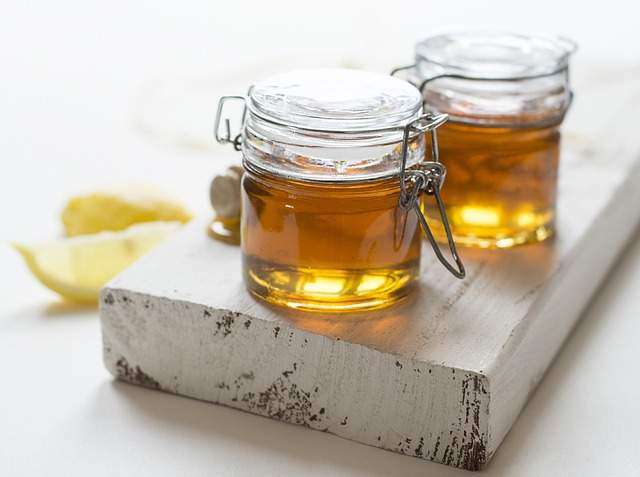
Enjoy Your New Creation
After successfully filtering and bottling your infused honey, it is essentially ready for consumption. You may essentially be tempted to eat it by the spoonful, however, you may always adopt some creative ways of consuming it.
For instance, you may drizzle it over your favorite foods, stir them into drinks and cocktails or even use them in place of plain honey/sweeteners in your tried and true recipes.
Herbal Honey Recipes
- CINNAMON SPICE HONEY
- 1 ¼ cups organic cassia cinnamon chips
- ¾ cup organic ginger root
- 6 organic cardamom pods
- 4 organic star anise pods
- Honey (Preferably raw local honey)
SLEEPYTIME HONEY
- ¾ cup organic lavender flowers
- ¾ cup organic chamomile flowers
- Honey (raw local honey is best)
There are literally several uses for this special treat and as such be creative with its application.
Nonetheless, some of the popular and great ways of enjoying this product include when drilled on things like fresh fruit, ice cream, toast, and even tea among others.
Frequently Asked Questions (FAQs)
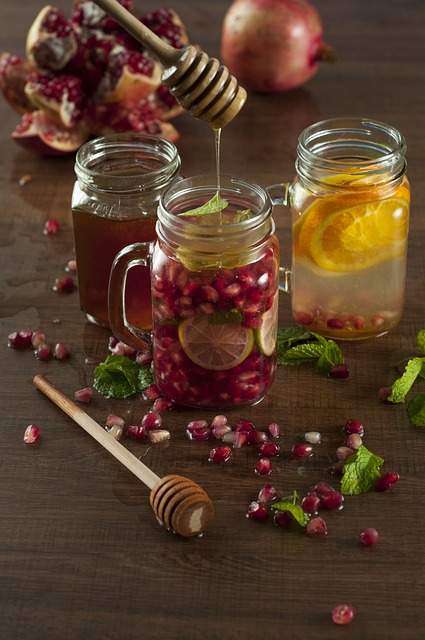
How do you infuse flavor into honey?
- Place the acquired flavor ingredients like spices etc. in a glass jar with a tight-fitting lid
- Pour your raw local honey overtop the ingredients
- Cover the jar tightly with the lid and allow it to sit for 7-14 days. The longer it sits, the stronger the flavor becomes.
- After all is infused, strain the honey solution into a clean glass jar using a filter
How long do you infuse honey?
The infusion should always take at least 5 days, however, the longer you let it infuse like for another week or so, the stronger and more intense the flavor usually becomes.
Nevertheless, if the specific ingredient varieties like herbs float to the top of the jar, you should often turn the jar over a few times or stir occasionally to keep them well coated.
How do you infuse honey quickly?
This is usually referred to as fast infusion and it entails a couple of steps that will guarantee you a properly infused honey.
They include:
- Set up a double broiler
- Pour a ½ cup of honey into the double broiler
- Add the tea bag of flavoring herbs/spices
- Slowly heat the honey to temperatures of 85°C (185°F)
- Remove the honey solution from heat and allow it to cool for about 10 minutes
- Afterward, extract the tea bag from the honey
Do you have to heat honey to infuse?
This usually depends on your preference whether you need to go the faster or the slower route. A quick infusion takes only a couple of minutes but requires heating.
However, the slower version takes 5 or more days to enable proper flavoring ingredient infusion without the need for heat.
What herbs go well with honey?
There are five popular flavor combinations that will surely leave your tongue tingling with delight. They include;
- Sriracha
- Lime
- Garlic
- Ginger
- Cinnamon
What can honey be infused with?
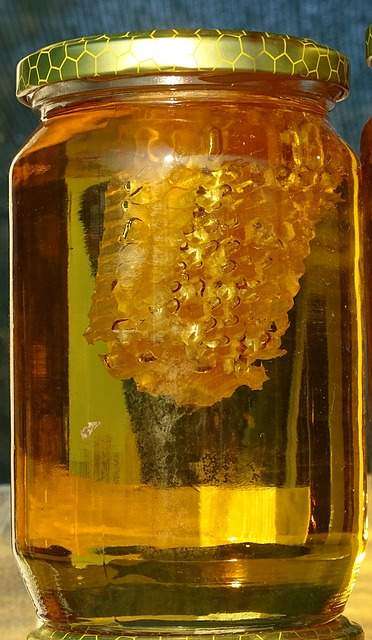
There are several flavoring ingredients that can be perfectly infused with honey beautifully pairing and offering exceptional sweetness.
They are:
- Dried herbs like rosemary, ginger, and mint
- Spices like cinnamon, cloves, and star anise
- A variety of dried fruits and vegetables like lemons and peppers
Do you have to strain infused honey?
Yes, this is usually the last step right before bottling. It ensures that all the leftover herbs and flavoring materials are filtered from the final infused honey.
And, to help maintain the new flavor and optimal freshness, you should store your strained-infused honey in a cool, dark place in tightly sealed jars.
Can you infuse honey with dried fruit?
Most definitely, dried fruit is perfectly infused into honey. The honey essentially takes on the properties of the dried fruit including but not limited to specific associated health benefits.
